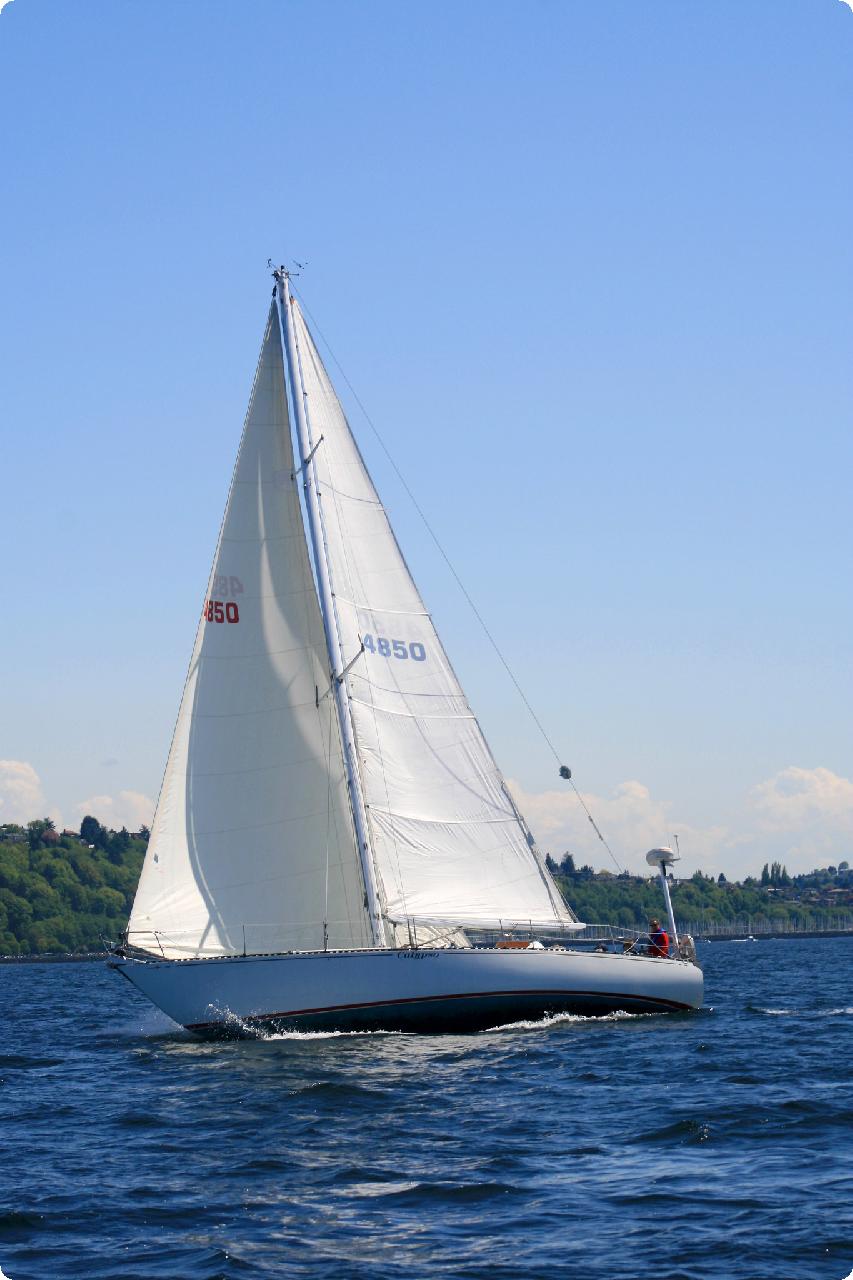HOW TO LEARN SAILING

Sailing is not rocket science. With the right guidance, it's easy to learn. After just a few days, you can learn the basics of sailing in moderate weather.
Continuing lessons impart additional skills for planning and realizing longer routes in different weather conditions.
Sailing schools therefore offer lessons in various course units, from a quick introduction to weather and maps to sailing across the seven seas.
Courses provide knowledge about:
Sails and sailing
- The physics of sailing
- Sail materials, types and construction, points of sail
- Sail handling
- Standing rigging and running rigging
- Sailing terms
- Manual and electric winches
- Tacking
Boat under Power
- Type of boats
- Type of motors, inboard, outboard
- Steering
- Fueling
- Engine start and stop procedure
- Stability and handling
- Beaching, morring buoy, towing, clearing (dock or wharf)
- Trailer: launch and recovery
Anti collision regulations
- Internation regulations "Colregs"
- Steering and sailing roles
- Lights and shapes: side lights, stern light, anchor lights
- Safe operation, behaviour in restricted visibility
- Night navigation
Meteorology
- Weather patterns, weather fronts
- Wind: sea breeze, land breeze, anabatic and katabatic, beauford wind scale, hurricanes, cylones, typhoones
- Waves: reading wave shapes
- Clouds: Currus, Cumulus, Stratus, Cirrostatus, Cirrocumulus, Altostratus, Nimbostratus, Statocumulus, Cumulonimbus
- Fog
- Rain: thunderstorms, lightning
- Source for weather information (even without internet)
- Heavy weather preparations and tactics
- Actions in restricted visibility
- Line squalls, leeshore
- Sea anchors, drogues
- Ice accretion
Charts
- Chart types and publications
- Chart symbols, units, terminology, abbreviations and scales
- Latitude, Longitude
- Heights and depths
- Compass rose, true north
Navagation
- Navigational techniques on charts
- Compass, variation, magnetic deviation, compass types
- Magnetic north vs. True north
- Position lines, course distance
- Collition rules on passage
- Selecting an anchorage
- Logbook
Buoyage
- Worldwide IALA regulations, region A and B
- Cardinal buoyage system
Tides and Currents
- Tidal heights
- Tide atlas, tidal diamonds
- Tide calculation
- Rule of 12
- Tidal currents
VHF Radio operation
- International radio regulations
- International phonetic alphabet and numbers
- Channel allocation, frequencies
- Transmitter, receiver (tranceiver)
- Antenna types, range
- MMSI Maritime mobile service identity number
- DSC digital selective calling
- Squelch
- Radio operation procedure
- Radio checks
- Distress messaging: Securite, Pan Pan, Mayday calls
- Urgency message protocol
- Actions when receiving a distres call, Mayday relay
- Radio slience (Seelonce), restricted working (Prudonce), end of silence (Seelone Feenee)
- Cancelling a distress call
Safety equipment
- Lifejackets
- SARTs
- GMDSS equipment and components
- Classification of CMDSS area
- Marine safety information (MSI) broadcasts
- Navigations telex (NAVTEX)
- International distress signals
First aid
- Seasickness
- Contents of a First Aid Kit
- First Aid response
- Cuts and strings
- Control of bleeding
- Dangers of cold: cold water shock
- Dangers of heat: burns, heat stroke, hypothermia
- Heart attacks and strokes
- Shock
- Drowning
- Choking
Responsibilities of the skipper
- Prior departure
- Safety, duty of care
- Delegation to crew
- Common courtesy
- Entering foreign countries
- International sea law